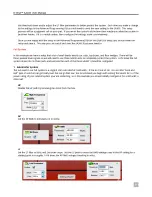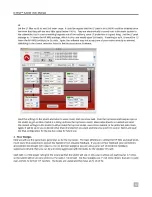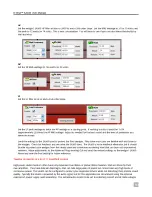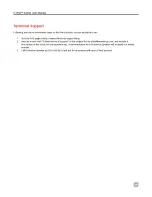
20
D-fend™ SA300 User Manual
Programming/Tweaking the Set-up Examples
Dual Sub Setup
In this example we are using a single SA300 to protect two subwoofer cabinets connected in parallel. To the SA300, it
looks like one load that is 4 ohms and can handle 1600 watts. When setting up the SA300 for the first time on a system it
is helpful to know the system’s F3 and Fb in order to get an idea of where you think the driver may experience excursion
problems. In our example, the F3 of the cabinet is 36 Hz and Fb is 32 Hz. This system is capable of producing very low
bass.
HF
You would begin by disabling the HF path since this is a subwoofer system.
AP
Since each box is rated at 800 watts and they are in parallel, the load will be rated at 1600 watts. We recommend
setting the AP RMS to one quarter of 1600, or 400 watts to begin with. If working in volts, this would be 40 v. Again,
the software may not accept one of your entries exactly as entered, defaulting to the closest selection found in the
microprocessor firmware.
LF
Since the system has a low F3 and Fb, you would begin with setting the LF filter frequency to 50 Hz and 2nd order
slope. Next you would set the LF peak to 800 watts (56.57 volts).
Send this setup to the SA300. Now play the system and listen to it. Drive it as hard as, or harder, than you normally
would with music you are familiar with. Listen for the limiting events and keep an eye on the indicator lights so the
SA300 can tell you what it is doing. If you feel the system can take more power and the limiting action is taking place
too soon, raise the AP RMS and/or the LF peak until you feel the system is playing as hard as it can and not tear itself
up. If you feel the woofers are reaching their mechanical limit before the SA300 engages, then you may need to back





































